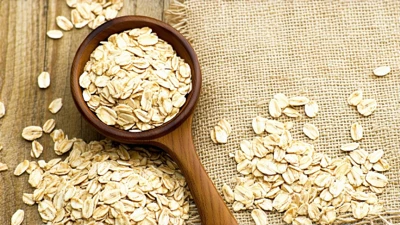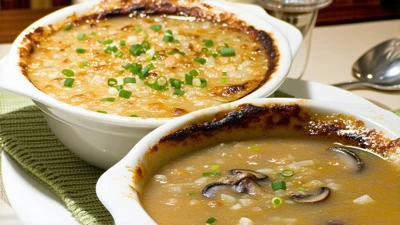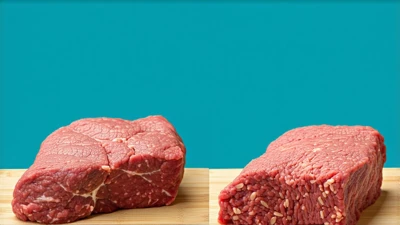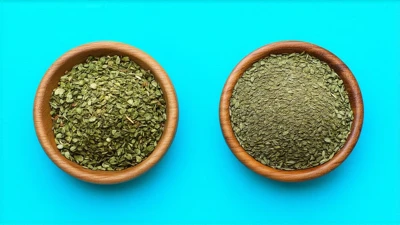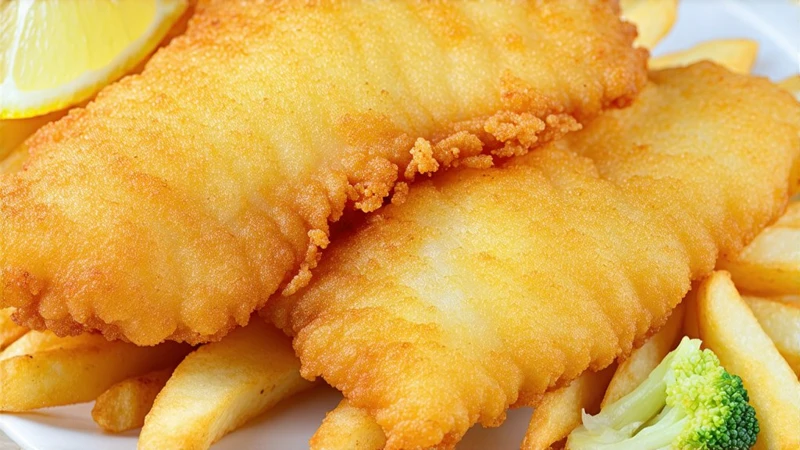
Flounder vs. Sole in the Fish and Chips Debate: A Primer
Skip the mushy peas: When it comes to fish and chips, the fish is everything. Among those two options, flounder and sole, there is some debate, even among seafood lovers. Both are flatfish with mild flavors, but subtle differences in nutrition, texture and sustainability distinguish them. In this article, we'll explore the data for whether which reigns supreme for your next crispy, golden meal.
Flounder vs sole nutrition comparison
Let's begin with the basics: nutrition. Here is a side-by-side comparison of 100g raw fillets: (data from the USDA)
| Nutrient | Flounder | Sole |
|---|---|---|
| Calories | 97 kcal | 86 kcal |
| Protein | 18.6g | 17.3g |
| Fat | 1.7g | 1.2g |
| Omega-3 Fatty Acids | 0.4g | 0.3g |
| Vitamin B12 | 1.2µg | 1.5µg |
| Selenium | 26.6µg | 28.4µg |
Takeaway: A protein and omega-3 winner, flounder wins out over sole; sole is a bit lower in calories and fat. Both are so high in vitamin B12 and selenium that they support heart and nerve health.
Flavor Profile Differences
The mild, mildly sweet flavor of flounder with buttery overtones is versatile for seasoning. Sole, especially Dover sole, has a more robust briny flavor, with mild nutty notes. While flounder takes well to bold spices, sole's natural flavor is best appreciated with minimalist seasoning.
Subjective: If you like a blank slate to work with, flounder fits the bill perfectly. For purists who love oceanic depth, sole reigns supreme.
Texture Comparison When Fried
Texture is key to fish and chips. Flounder's flesh is soft and flakes, which can result in a mushy bite when fried. Sole, particularly thicker cuts like the Dover sole, retains structural integrity better than flounder does, and has a firmer, meatier texture.
Best Cooking Methods
For Flounder:
Light Battering: A thin beer batter works best for a light touch on its delicate texture.
Quick Frying: 375°F (190°C) for 3–4 minutes—avoid overcooking
For Sole:
Double-Fry: Fry once at 320°F (160°C), then again at 375°F (190°C) for extra crispiness.
Pan-Frying: Best for thicker fillets to cook through uniformly.
Availability and Seasonality
Flounder:
Peak Season: Late spring to early summer (May–July) in the Atlantic
Where it's available: Available in U.S. year-round, but freshest coastal states, from Massachusetts to North Carolina.
Sole:
Peak Season: Winter to early spring (November–March) Pacific.
(The imported gossamer fillets are especially familiar in U.S. markets; fresh catches are found mostly on the West Coast.)
Sustainability Ratings
Sustainability is a consideration for eco-minded eaters. Refer to the table below:
| Fish | Monterey Bay Aquarium Rating | Key Concerns |
|---|---|---|
| Flounder | Yellow (Good Alternative) | Trawl bycatch |
| Sole | Green (Best Choice) | Well-managed fisheries |
Seafood Watch, 2023.
Importance of Mercury Levels in Relation to Health
Both fish are low in mercury, but flounder is the winner by a hair. Flounder is listed at 0.05 ppm and sole at 0.08 ppm, well below the 0.1 ppm safety threshold, according to the F.D.A.'s list.
Decoding Omega-3 Content: Which is a More Potent Source?
Flounder has 0.4g omega-3s per 100g, marginally up on sole's 0.3g but below fatty fish such as salmon (2.3g).
Calorie & Protein Comparison
Sole is lower in calories (86 kcal vs. 97 kcal) and may thus appeal to health-conscious eaters. But flounder's higher protein content (18.6g versus 17.3g) makes it superior for muscle repair.
AdvertisementFat Content and Correlating Health Implications
Both are lean options, with 1.2–1.7g of fat per serving. Sole's low fat content makes it perfect for low-calorie diets but flounder's higher fat content helps with satiety.
Vitamins and Minerals
Sole has more vitamin B12 (1.5µg vs. 1.2µg), essential for energy metabolism, and flounder has more selenium, an antioxidant that helps keep the thyroid healthy.
Bone Structure and Filleting Ease
Flounder has a more simple bone structure — it has fewer pin bones, so it's easier to fillet. Sole, especially Dover, has a denser spine but it is tricky to bone.
Cost Comparison
Flounder typically ranges from $8–$12 per pound and sole (especially imported Dover) from $12–$18 per pound.
Regional Preferences
Flounder: An inexpensive favorite in New England (U.S.) and the Gulf Coast.
Sole: Popular in fine West Coast restaurants and European-influenced fare.
Seasoning Recommendations
Flounder: Match with strong spices such as paprika, garlic powder and Old Bay.
Sole: Elevate the taste of the fish with the addition of lemon zest, parsley and black pepper to help bring out its inherent flavor.
Achieving Crispy Texture
Flounder: Dry pat fillets, dredge in cornstarch, batter.
Sole: Use a rice flour batter for extra crunch, as its toughness holds up under long frying.
Traditional Recipes
Flounder: New England–style fish and chips with malt vinegar.
Sole: Sole meunière (brown butter, lemon, capers), adapted for frying.
Pairing with Sides and Sauces
Flounder: With cole slaw and tartar sauce.
Sole: Pair with roast vegetables and a lemon-caper aioli.
Environmental Impact
Flounder: Overfishing is a concern in some Atlantic fisheries. Opt for Pacific flounder.
Sole: Most Pacific sole fisheries are MSC-certified with minimal bottom habitat damage.
Storage and Shelf Life
Both fishes have a refrigerated shelf life of 1–2 days. Flounder (low fat content) freezes better (3 months max).
Final Verdict
Choose Flounder If:
You want something affordable, high in protein.
You like it lighter in texture and less flavor-defining.
Choose Sole If:
Sustainability and a firmer texture are priorities.
You're willing to spend on gourmet luster.
Both are good choices, but flounder wins for classic fish and chips because it's the best balance of cost, nutrition and ease. But if you're feasting for a special occasion, sole's luxurious texture and eco-credentials merit the splurge.
What fish do you most often use for fish and chips? Share your thoughts below!
Data Sources: USDA, Seafood Watch, FDA, MSC











